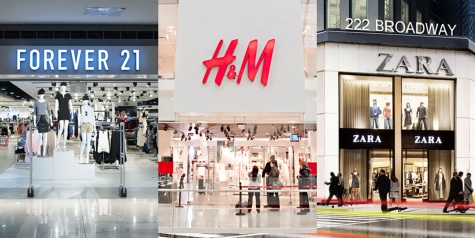
Kate Hedger | Head Editor
April 15, 2020
Picture this: you’re walking through the halls at school and see your friend wearing a cute, trendy shirt. You ask her where she got it and she says it’s from a website called Shein. You go home and check out Shein, and to your surprise every clothing item on the site is under 20 dollars. You get excited and start adding items to your cart.
When people discover sites like Shein, they often are shocked to find such a cheap deal. This may seem too good to be true, and that’s because it is. Shein, along with other stores such as Urban Outfitters, Zara, Princess Polly, H&M, and Forever 21 are fast fashion brands.
Fast fashion brands are inexpensive and produced rapidly by mass market retailers in response to the later trends. The idea is for the consumers to be able to quickly buy something that is currently in style, wear it a few times, then throw it out once it no longer fits the trends. Fast fashion capitalizes on the idea that in order to be stylish you have to constantly be switching up your wardrobe. It heavily promotes overconsumption and the idea that more is better.
“I try to stay away from fast fashion as much as possible,” senior Maddie Gutowski said. “I get why it’s appealing to people because it’s fashionable clothes that are cheap, but I would really encourage people to stay away from it as much as possible and put their money towards ethical brands instead.”
Fast fashion clothing items are created by garment workers who often work in unsafe environments and are forced to work at low wages. Animals are also impacted by fast fashion. Real fur can often be passed off as faux fur and be worn by unknowing customers. Because of how much real fur is being produced there are some instances where it is cheaper to use than faux fur.
The market of fast fashion is also a large contributor to pollution. The concept forms a toxic cycle of overproduction and quick consumption. Instead of keeping staple clothing items for years people have begun to throw away items after just a few months.
“Fast fashion is a really unsustainable way of making clothing that is just going to be out of style in a few months,” sophomore Sofia Sipelis said. “The clothing is so poorly made and is essentially created to be thrown out. It contributes to pollution and is overall an unsustainable way to produce a product.”
It is easy to spot the problems that fast fashion has brought about, but it’s much more difficult to spot a solution. British designer Vivienne Westwood says it best, “buy less, choose well, make it last.” A great place to start is with simply buying less. Buy clothing that you can see yourself wearing for a long time, be mindful and choose well made garments that will last you years.
If you are still looking for the cheap price of fast fashion try shopping second hand. Thrifting is a great way to find unique items. There are even websites designed for people to shop trendy clothing second hand such as Depop and Poshmark.
We all have the responsibility to help our planet and those who live on it. By buying fast fashion we are supporting an industry that thrives on pollution and the mistreatment of garment workers and animals. The next time you go to buy an item from a fast fashion store ask yourself: is this an industry I want to support?

Leave a Reply